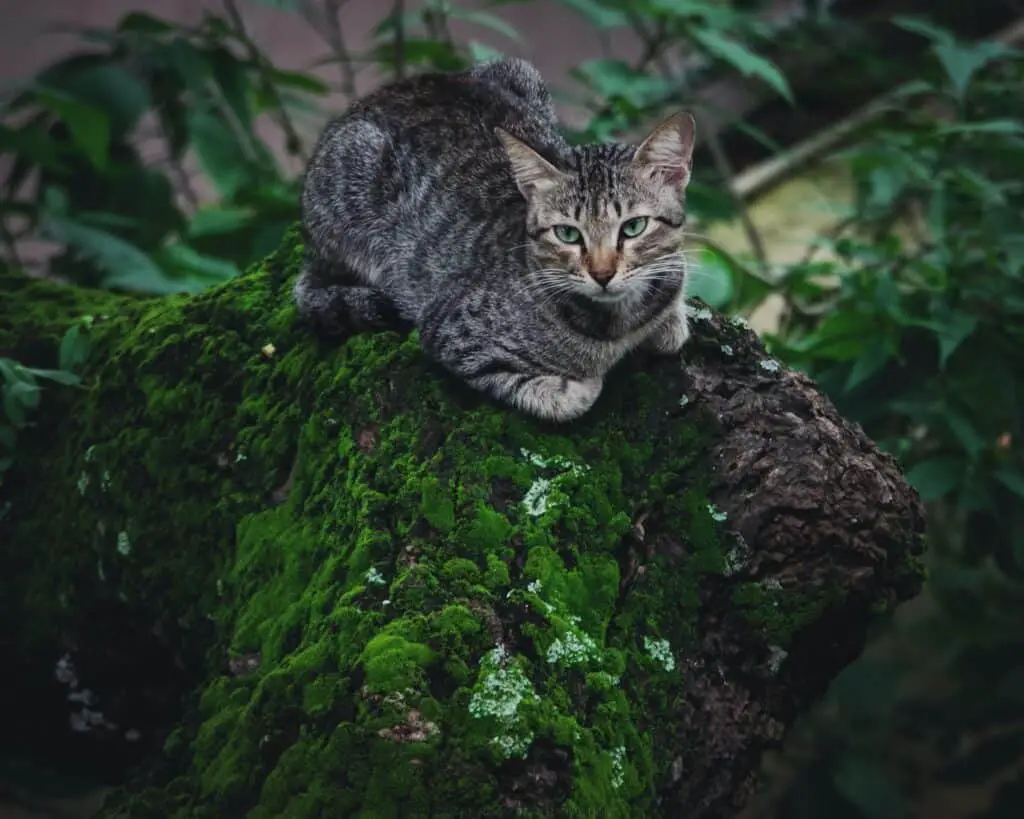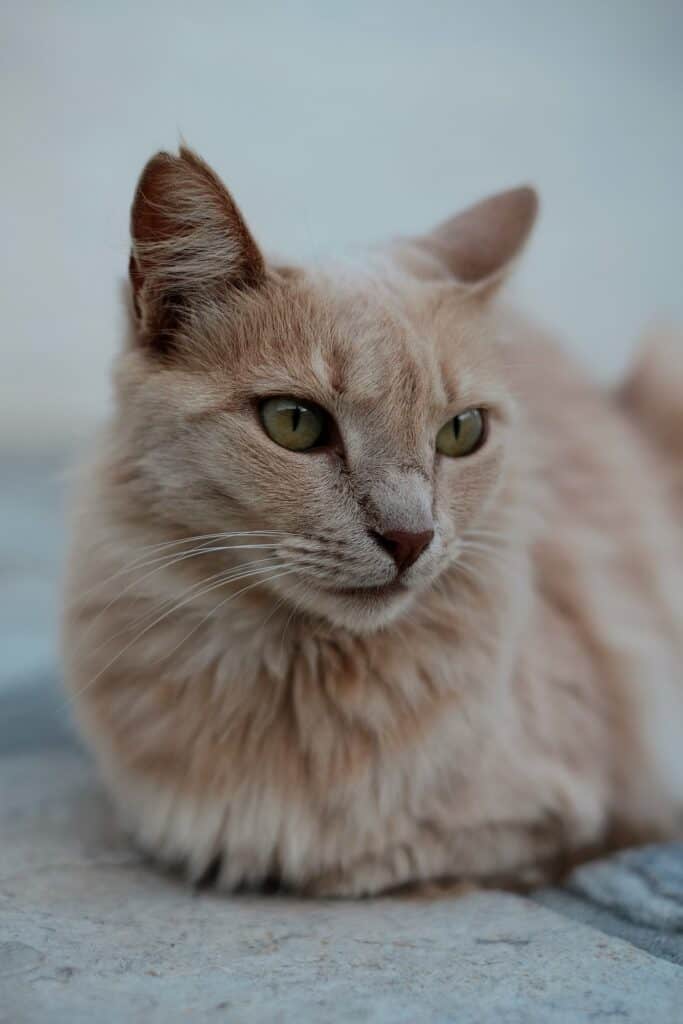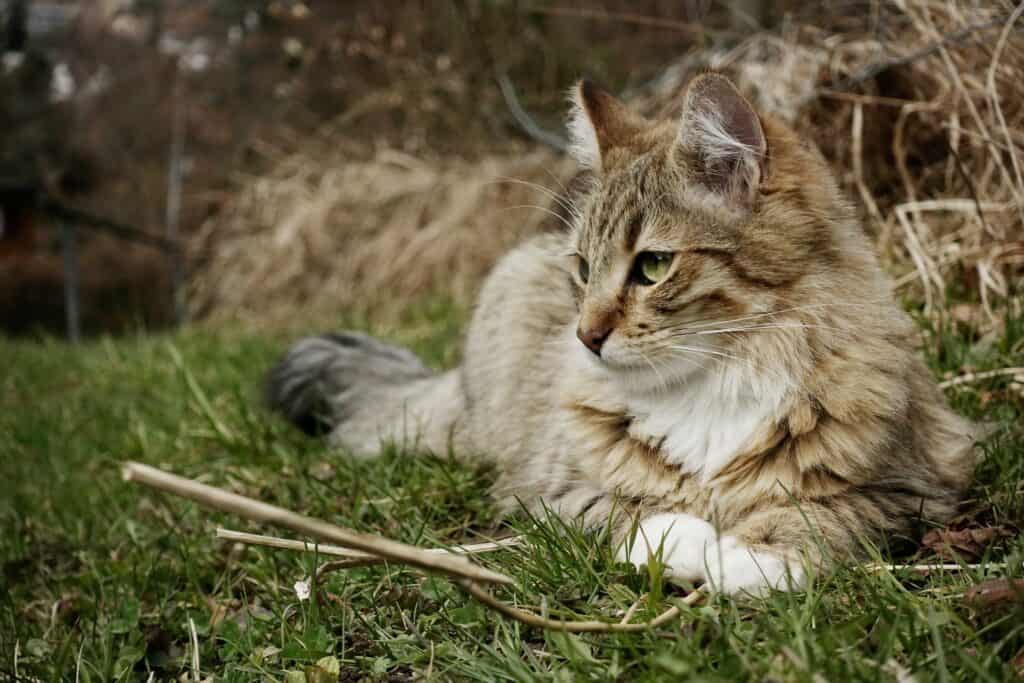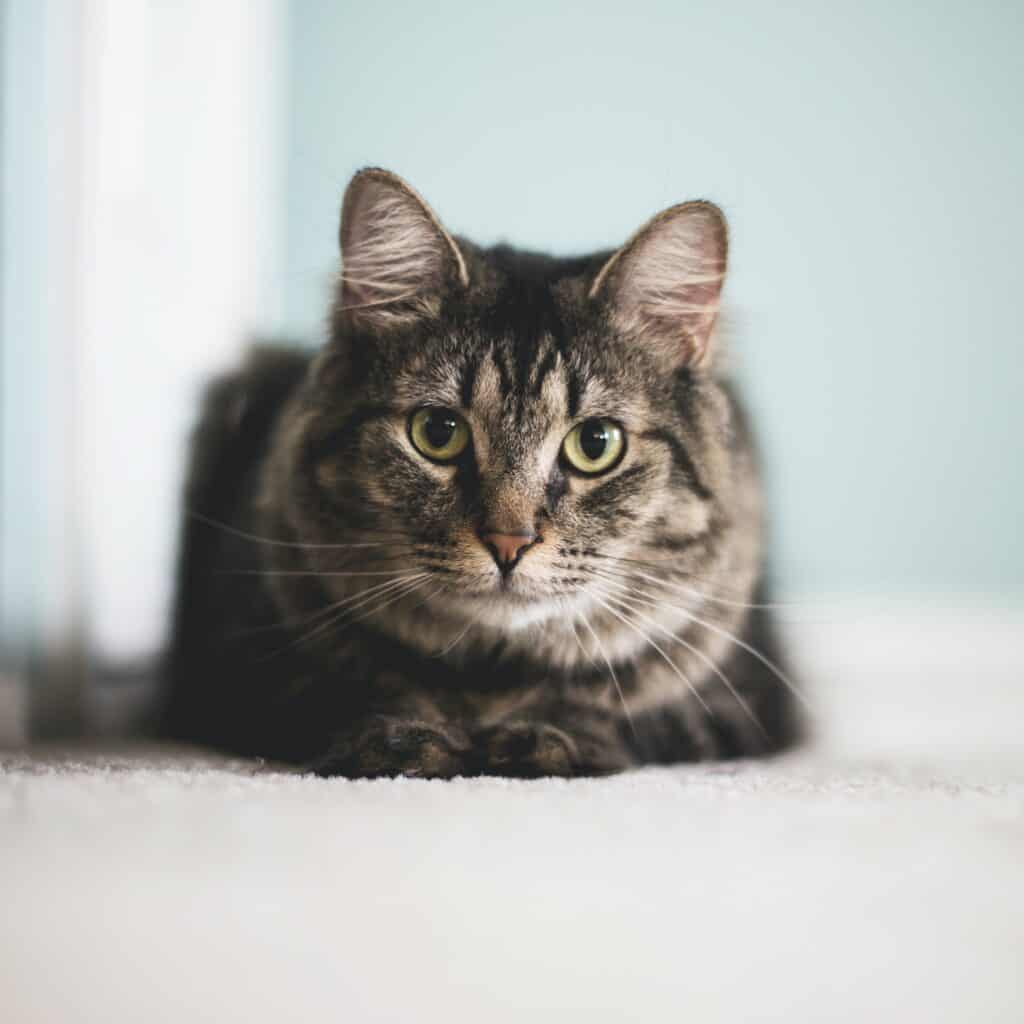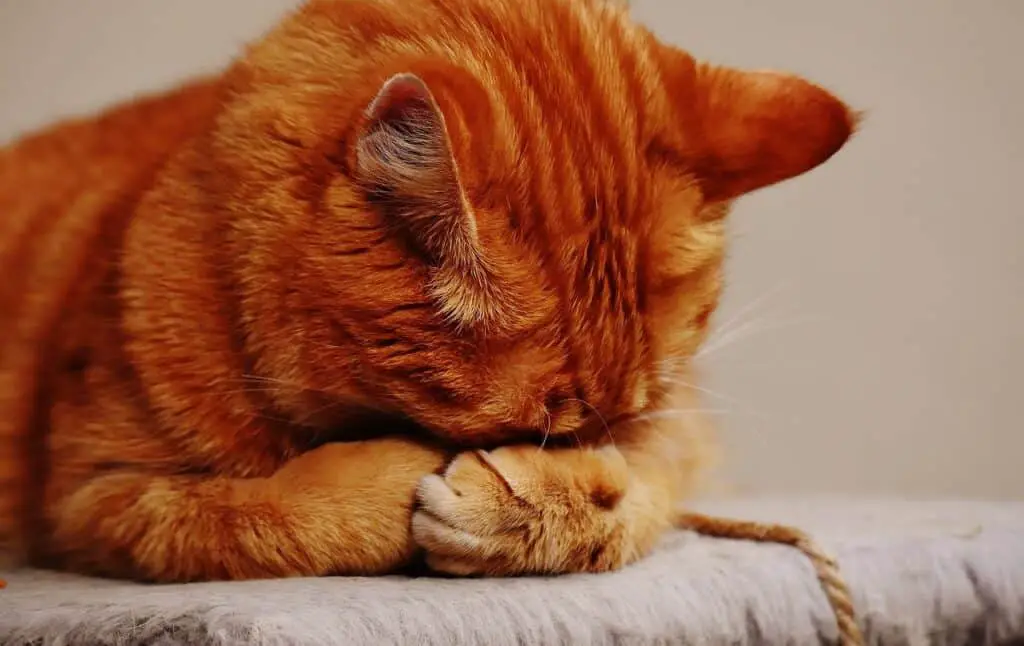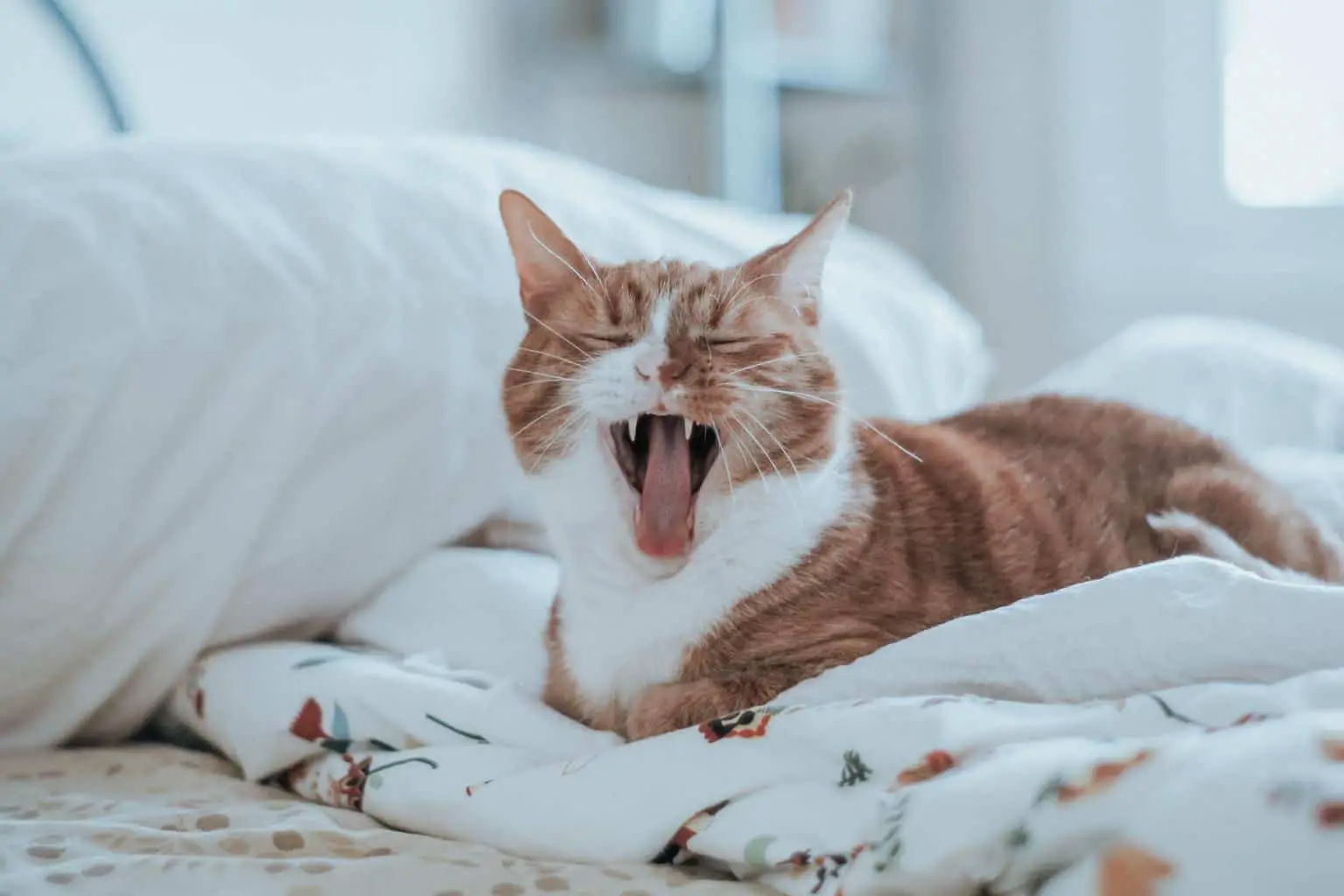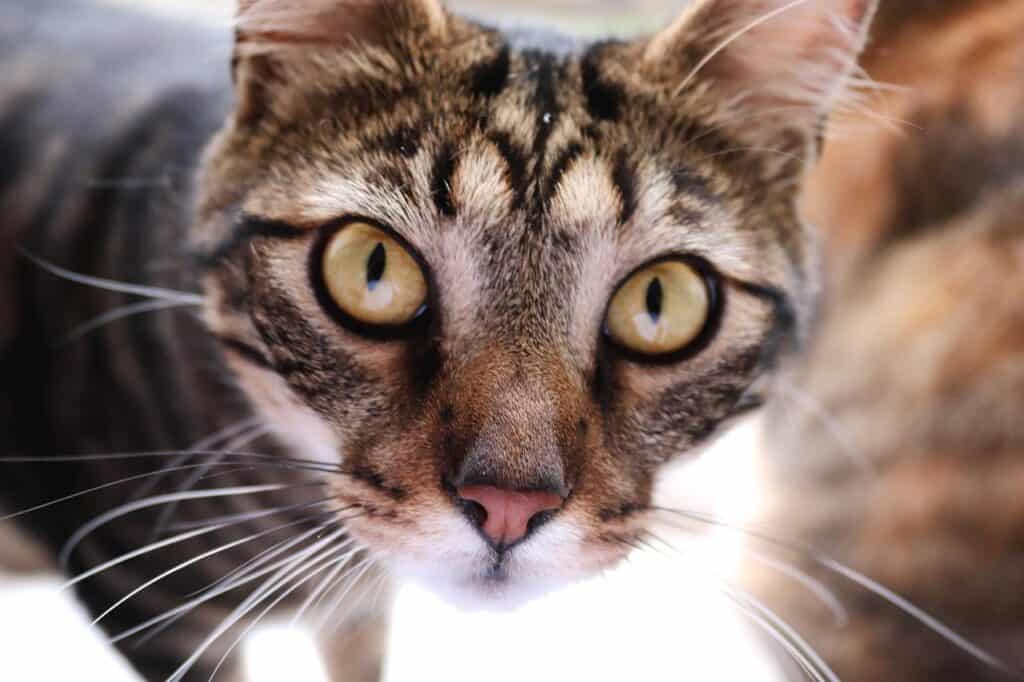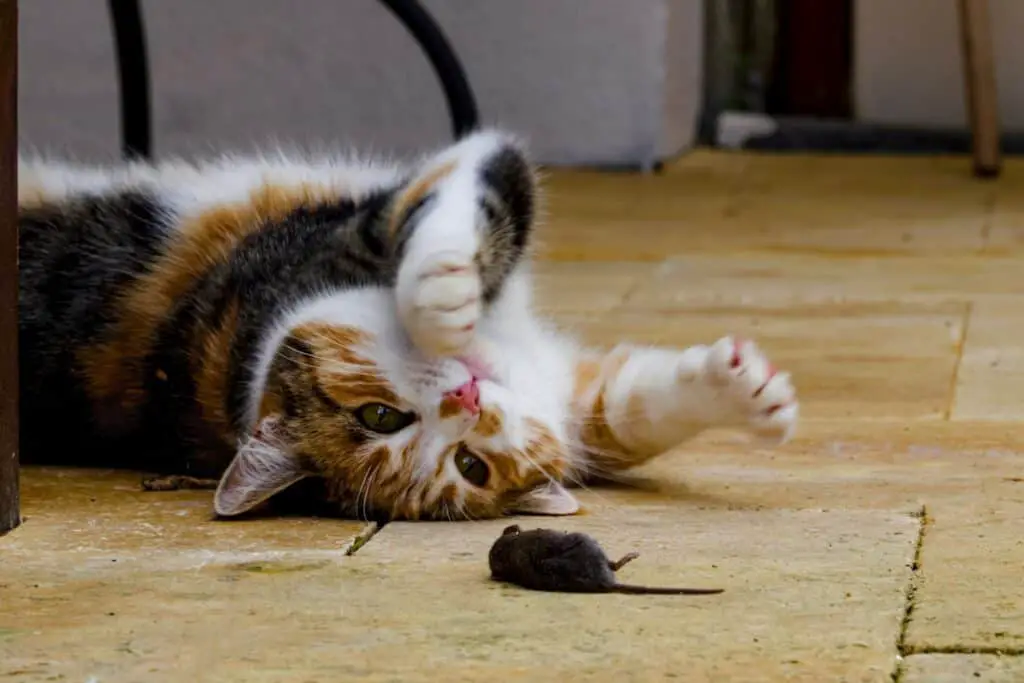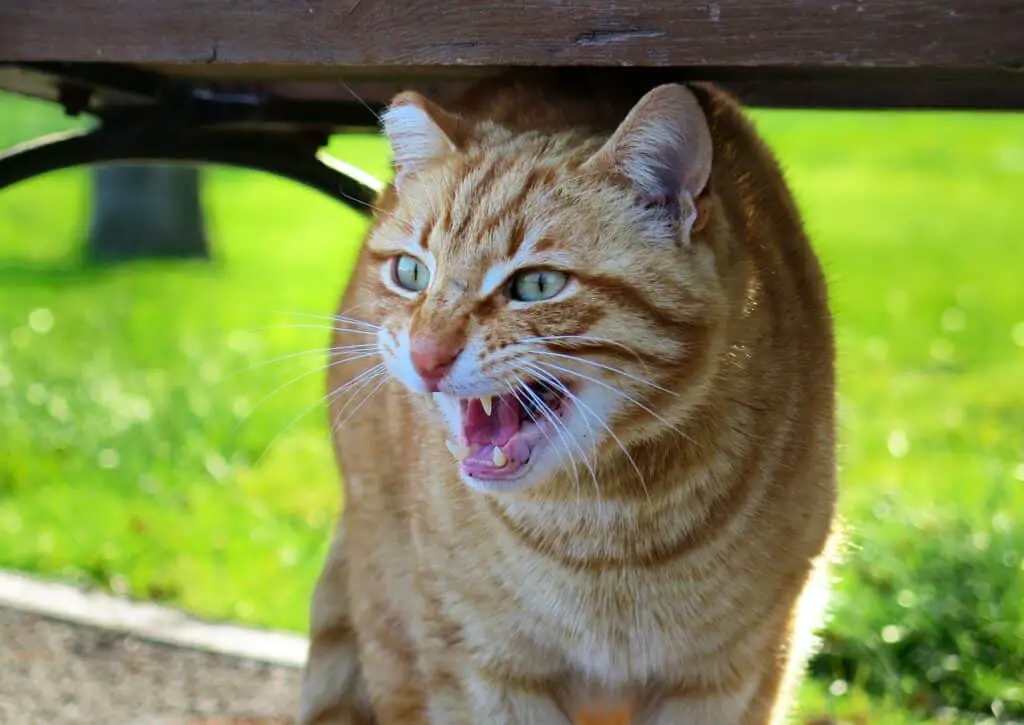Domestic cats, despite their predatory nature, are masters of lying around. Indeed, it can sometimes feel like cats can make even seemingly impossible positions look comfortable. One of those well-known positions is the so-called ‘Cat Loaf Position’.
This innate ability to relax—or “loaf”—is not without its meaning, and, as a caring cat owner, it can be helpful to understand those meanings. So, why do cats loaf?
Cats like to sit in the loaf position because it’s comfortable and it keeps them warm. They will only rest in this position when they feel relatively safe, but that doesn’t mean they’re completely relaxed. Loafing is a position in which your cat can get up quickly, should the need arise. In extreme cases, the loaf position can also indicate your cat is hiding an injury.
For the most part, a loafing cat is probably happy, but we’re going to take a look at why your cat might loaf when it is unhappy, as well.
Cat loafing: What is it?
The easiest way to think of cat loafing is by remembering that they literally take on the shape of a loaf of bread when they do this. Your cat will rest on its belly with its forepaws tucked underneath its chest. You may be able to see the paws in some cases, though they will often tuck them away entirely.
There is no age limit on loafing, and you will find kittens, older cats, and everything in between assuming this position at some stage or another.
Loafing is not a single fixed position; there are variations on the loaf. For example, your cat might sit with its paws flat on the ground or side by side. It might tuck its paws underneath itself, or it might have them poking out in front of its body.
Your cat might even loaf and fold its paws so that it is similar to how we might fold our arms. The thing that makes it loafing is the cat’s body shape, which, as we’ve mentioned, looks a little like a loaf of bread.
What does it mean when cats loaf?
The majority of the time, your cat’s loafing is a sign that it is comfortable in its surroundings and content with the current state of affairs. Not so content that it is prepared to flop over onto its back and leave itself vulnerable, but comfortable enough to relax a little.
Sometimes, however, loafing can be an indication of your cat’s health, so it pays to learn what signs to look for. This way, your cat’s seemingly innocent loafing may give you an advanced warning of a health concern they are going through.
It’s comfortable
Probably the most obvious reason you might find your cat loafing around is that, well, it’s comfortable. And as any cat owner knows, cats love to find a nice, comfortable position to settle into and relax.
Of course, it wouldn’t seem particularly comfortable to us humans—just imagine lying on your belly with your front arms tucked under you and your head sticking up—but it’s perfectly comfortable for cat physiology.
And, of course, there are the different ways of loafing we mentioned, giving your cat options if it’s not comfortable in one loafing position.
Perhaps the closest human analog to loafing is sitting or standing with your arms folded across your chest. Sometimes we do that just because it’s comfortable; sometimes, it’s also a sign of a slight defensiveness. This position is very similar to a cat’s loafing.
And, like us folding our arms, there are comfier positions to be in, but loafing is a compromise—comfortable, but ready to go at the first sign of trouble!
Contentedness
It’s not all about being on guard, of course; cats also loaf when they feel safe and happy. Lounging around in any form is a sign that the cat is comfortable in its surroundings, but there are subtler signs to look out for in their body language.
For example, if your cat is loafing with its paws under its body, that means its claws are hidden, which is an indication that your feline friend isn’t feeling threatened. If it were feeling threatened, it would have its paws out, ready to pounce.
That being said, even with its paws tucked away, your cat isn’t entirely at ease.
A cat that is completely content in its surroundings would lay on its side, or even its back, and stretch out, often exposing its belly. This position is far more comfortable but also exposes the cat and makes it more vulnerable.
By staying in a loafing position, your cat finds a balance between being comfortable and being ready to go if it needs to.
Cats loaf in many places that they are at ease in, such as their cat bed or even on your lap. This demonstrates that loafing is one of their favorite positions and is quite comfortable for them.
You are much less likely to find your cat loafing outside or in the presence of larger animals that might scare it.
It’s warm
Like all warm-blooded animals—including us—your cat’s body regulates its own temperature. This is in contrast to cold-blooded creatures—like reptiles—which are essentially at the mercy of the environment around them when it comes to temperature.
Our organs need to be warm enough to operate, with the ideal temperature being around 97.5°F (36.5°C) for humans, a cat’s normal body temperature sits between 100.5°F and 102.5°F (38.1°C and 39.2°C).
The energy needed to create that warmth comes from food. For our well cared for feline companions, the availability of food is seldom a concern however, evolutionarily speaking, food was not always readily available.
This led to cats conserving energy wherever possible, and loafing is one such method of preserving energy by preserving body heat. This process is called thermoregulation.
Since cats have evolved for such a long time, these feline behaviors are still hard-wired into them.
Like us, cat’s bodies prioritize the core—the central mass where most of the organs are. The limbs also represent a point of cooling, as it’s easier to lose heat through your extremities than through your body.
When loafing, the cat’s limbs are tucked under the body, ensuring as much of that heat is retained. Your cat may also curl its tail in for the same reason.
Of course, these behaviors are not conscious choices by your cat, but rather something they do instinctively and thanks to many centuries of evolution.
Injuries
Another reason your cat might tuck its paw underneath its body is that the paw has been injured or damaged in some way. Tucking the paw away under the body protects it from further harm and may also provide some relief from the pain your cat is feeling.
Such an injury could result from an overgrown claw curling back into the paw, causing discomfort when walking. And, of course, they could have just cut or bruised their paw while out and about.
If you suspect your cat has a painful paw, don’t try to pull it out from under your loafing feline. Not only do cats not like you grabbing their paws at the best of times, but you could exacerbate the injury.
The best thing to do would be to wait until your cat gets up of its own accord and see if it limps. This is an obvious sign of injury or another problem with your cat’s paw. In that case, it’s best to consult a vet and make sure your fluffy friend is okay.
Illness
Your cat may also set itself up in a loafing position when it’s sick, though there is a certain kind of loafing to look out for. A relatively common cause is chronic kidney disease (CKD) and often results in a distinctive loafing position.
This loafing position is sometimes referred to as the “dying cat meatloaf position“, this is essentially a normal loafing position with the head down.
Usually, when loafing, a cat’s head will be up, much like the Sphinx. In this case, however, your cat will be lying with its head stretched forward and pointed down. It will tuck its paws under its belly and avoid putting any pressure on its internal organs.
This kind of loafing is, unfortunately, most common at the point of “crashing”. This is when a cat’s condition gets abruptly worse and might result in organ failure.
If you notice your cat doing this, don’t immediately panic. Your cat may just have turned into a bread loaf sleeper—nodded off in a normal loafing position and let its head dip down.
However, do observe them for other signs of illness, and get them checked up if you spot any.
Just because…
Of course, just because there can be a reason why your cat is loafing doesn’t mean there is a reason.
Sometimes, cats just do things for no apparent reason whatsoever. Cat owners will be familiar with seemingly inexplicable behavior displayed by their feline friends, and we shouldn’t always try to find a deeper meaning behind our cat’s behaviors.
Loafing is no different. Sometimes your cat will loaf simply because it wants to. Other times it will lie on its back or side, much as you or I might choose to do for no particular reason when relaxing. There isn’t always going to be a reason for your cat’s behavior, so don’t tie yourself in knots trying to figure out what things mean!
Final Thoughts
In almost any case, cats loaf because they are happy, contend and don’t feel threatened or a need to defend themselves.
It’s also quite common for them to doze off in this position. It’s not uncommon for them to close their eyes and seem asleep while they are fully conscious. However, sometimes they nap and let their head dip down.
As long as their posture is relaxed, they’re purring and exhibit a happy appearance, there is no need to worry about anything.
If your cat loafs constantly and doesn’t show any interest in food or any activity at all, combined with a tense body or even hissing when you approach it, then there might be something to worry about. In such a case, it’s wise to check with your vet.
Cute cat loaf pictures
